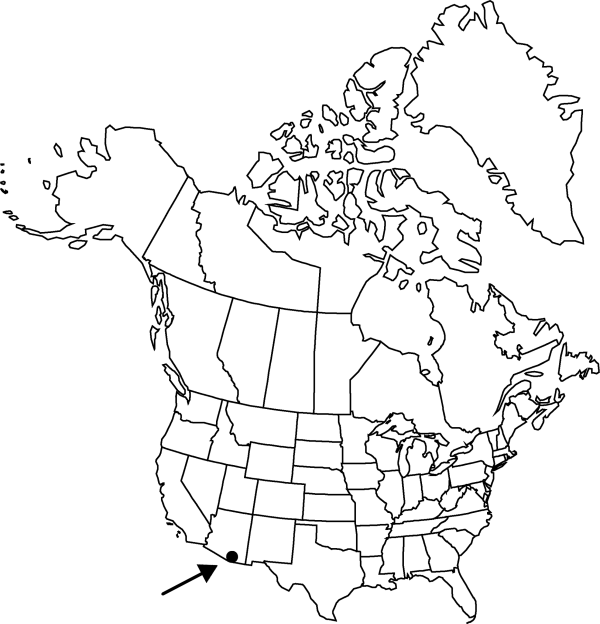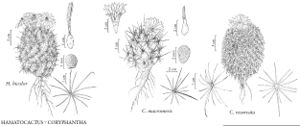Difference between revisions of "Coryphantha recurvata"
Cact. 4: 27. 1923.
FNA>Volume Importer |
imported>Volume Importer |
||
| (2 intermediate revisions by 2 users not shown) | |||
| Line 8: | Line 8: | ||
}} | }} | ||
|common_names=Santa Cruz beehive cactus | |common_names=Santa Cruz beehive cactus | ||
| + | |special_status={{Treatment/ID/Special_status | ||
| + | |code=F | ||
| + | |label=Illustrated | ||
| + | }} | ||
|basionyms={{Treatment/ID/Basionym | |basionyms={{Treatment/ID/Basionym | ||
|name=Mammillaria recurvata | |name=Mammillaria recurvata | ||
| Line 51: | Line 55: | ||
|publication title=Cact. | |publication title=Cact. | ||
|publication year=1923 | |publication year=1923 | ||
| − | |special status= | + | |special status=Illustrated |
| − | |source xml=https:// | + | |source xml=https://bitbucket.org/aafc-mbb/fna-data-curation/src/2e0870ddd59836b60bcf96646a41e87ea5a5943a/coarse_grained_fna_xml/V4/V4_415.xml |
|subfamily=Cactaceae subfam. Cactoideae | |subfamily=Cactaceae subfam. Cactoideae | ||
|genus=Coryphantha | |genus=Coryphantha | ||
Latest revision as of 21:58, 5 November 2020
Plants unbranched or few branched, except in old age, ultimately forming mounds, rarely to 1 m diam., stems to 50, with most spines pressed against stem outline. Roots ± diffuse. Stems spheric to broadly short cylindric, 10–25(–30) × (7.5–)10–15 cm; tubercles 6–10 × 6 mm, firm; areolar glands seasonally conspicuous; pith 1/5 of lesser stem diam.; medullary vascular system conspicuous. Spines 12–20 per areole, tan or yellow, largest spines turning gray with red tips, all nearly terete; radial spines (12–)15–20 per areole, 12–15 mm, basally 0.5 mm diam.; central spines 1(–2) per areole, decurved, (15–)20 mm, usually less than 1 mm diam. Flowers distant from stem apex, forming ring around distal portion of stem, 25–40 × 25–40 mm; outer tepals denticulate; inner tepals 20–30 per flower, greenish yellow or lemon yellow, 18 × 3–4.5 mm; anthers pale yellow; stigma lobes ca. 5, pale green (requiring verification), ca. 2.5–2.8 mm. Fruits greenish white (drying yellow-green) to partly or wholly tinted with dull reddish brown, usually 1.5–2 times longer than thick, spheric or elongate, 9–12(–13) × (4–)5–7 mm, pulp sparse and soon drying; floral remnant strongly persistent. Seeds bright brown, spheric, finely and weakly raised-reticulate.
Phenology: Flowering summer; fruiting winter (Nov–Jan).
Habitat: Valleys, mesas, foothills, grasslands, oak belts, grassy or rocky areas
Elevation: 1200-1800 m
Distribution

Ariz., Mexico (Sonora).
Discussion
Selected References
None.
